As we cherish the new splashes of spring colour emerging from the murky depths of “lock-down” winter, we are reminded of the perennial cycle of the seasons. The seasons rarely fail to deliver their allotted changes, however unprecedented the events of each year in other respects.
If you’d like to explore spring through the rich and varied collections of the National Art Library, you can register for our free online talk A leaf through spring with the National Art Library. For the time being, here’s a more flower-focussed dive into the NAL collections…
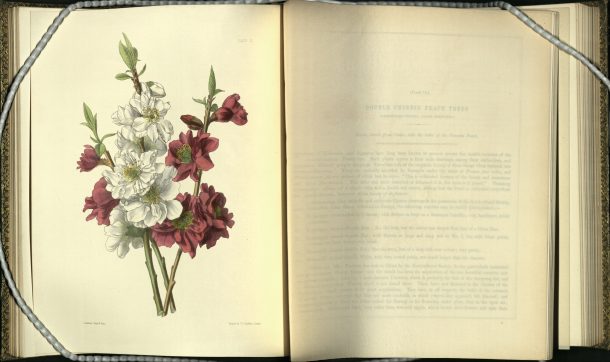
Paxton’s flower garden is a three volume work richly illustrated by 108 hand-coloured lithographs. Only three of the planned ten volumes were published, possibly due to their expensive production costs. Gardening and botany were in vogue within Victorian Britain and the discovery and cultivation of new plants from abroad were pursuits eagerly undertaken, elevating therein the names of botanists and their patrons.
The specimens depicted here are ‘Double Chinese Peach Trees’, native to China, ‘The Speckled Odontoglota’, a type of Odontoglossum, a genus of orchid native to central and south America, and the Swainsona formosa ‘Dampier’s Clianth’, native to Australia. Paxton was known to have organised plant hunting expeditions, the sense of adventure and intrigue around the world of gardening enhanced by the danger involved in collecting these samples. Some of Paxton’s men indeed met their demise, drowning on an ill-fated trip to California in the 1830s.
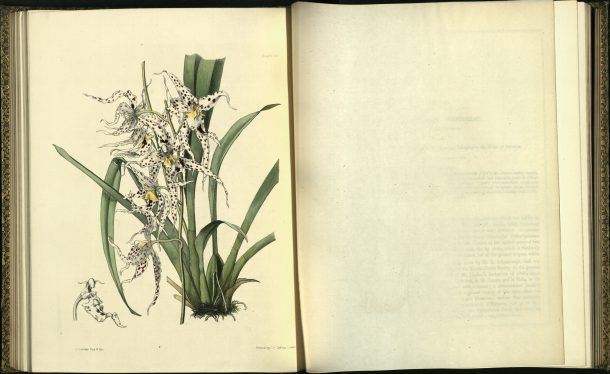
Joseph Paxton had become the Head Gardener of Chatsworth in his early 20s, appointed by William Cavendish, 6th Duke of Devonshire – of Cavendish banana fame! Paxton had impressed whilst working as a gardener in the Horticultural Society gardens, close to the duke’s property of Chiswick House.
Paxton became captivated by the creation of a series of greenhouses to house tropical plants, such as pineapples and what would become the aforementioned Cavendish bananas. He developed ridge and furrow roofs that would be at right angles to the morning and evening sun to progress these specimens whose cultivation was not naturally suited to the British climate.
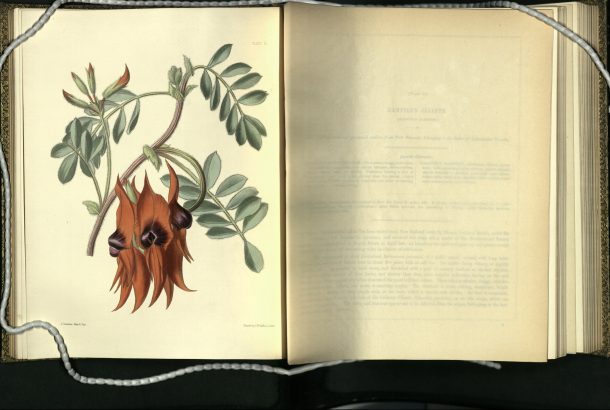
So, this work with greenhouses is quite significant to us at the V&A as it went on to inform Joseph Paxton’s design for – you may have guessed – the Crystal Palace of 1851. The V&A’s initial collections were of course developed from the success of the Great Exhibition of 1851.
Here’s a lithograph showing the Crystal Palace and a ceramic mug with another depiction from a group of Crystal Palace memorabilia which belonged to Gerald Smedley Hervey, MBE.
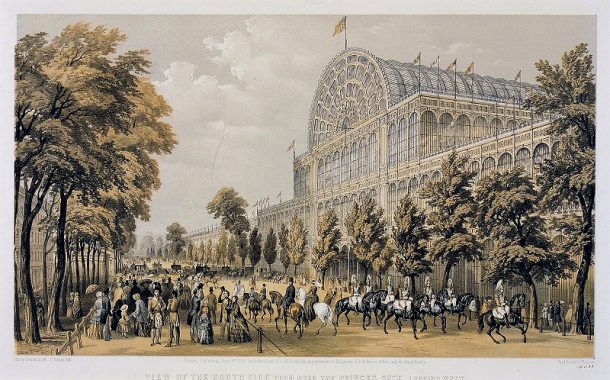
Colour lithograph showing an exterior view of the Crystal Palace in Hyde Park during the Great Exhibition of 1851, by Phillip Brannan, lithography by T. Picken for Ackermann & Co., 1851, Great Britain. Museum no. 19633
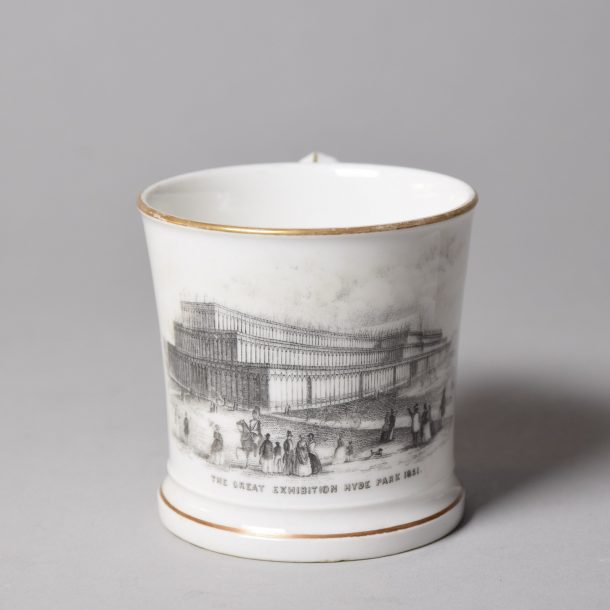
At the National Art Library (NAL) we house extensive runs of Victorian journals such as The Illustrated London News (ILN): an important publication, which began recording events visually on a weekly basis before the successful reproduction of photography on the page.
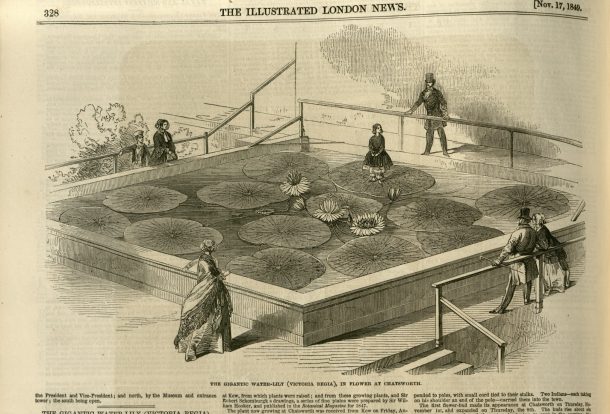
Above, we can see a wood engraving from the ILN of Paxton’s 8 year old daughter, Annie, standing on a South American Victoria amazonica leaf in the lily house at Chatsworth. The water-lily was subject to a race to cultivate the plant. The Duke of Devonshire, Paxton and his team claimed the first success of producing flowering specimens. Its giant lily pads – up to five feet in diameter – inspired Paxton, however, in an unforeseen way. The leaves are a natural feat of engineering through their radiating ribs with flexible cross ribs on their undersides. The strength of this organic structure (as demonstrated by Annie) went on to inform Paxton’s conservatory design at Chatsworth and ultimately the famous Crystal Palace a few years later…
Hopefully, this botanical snap-shot into the past has whet your appetite for further explorations into the National Art Library collections. Continue your journey with us online, taking a live leaf through spring at the end of the month (now available for you to view at your own leisure). Alternatively, you could read an article on our manuscript or book collections. However you choose to welcome in spring, a treasure trove of visual history stands digitally at your disposal!


